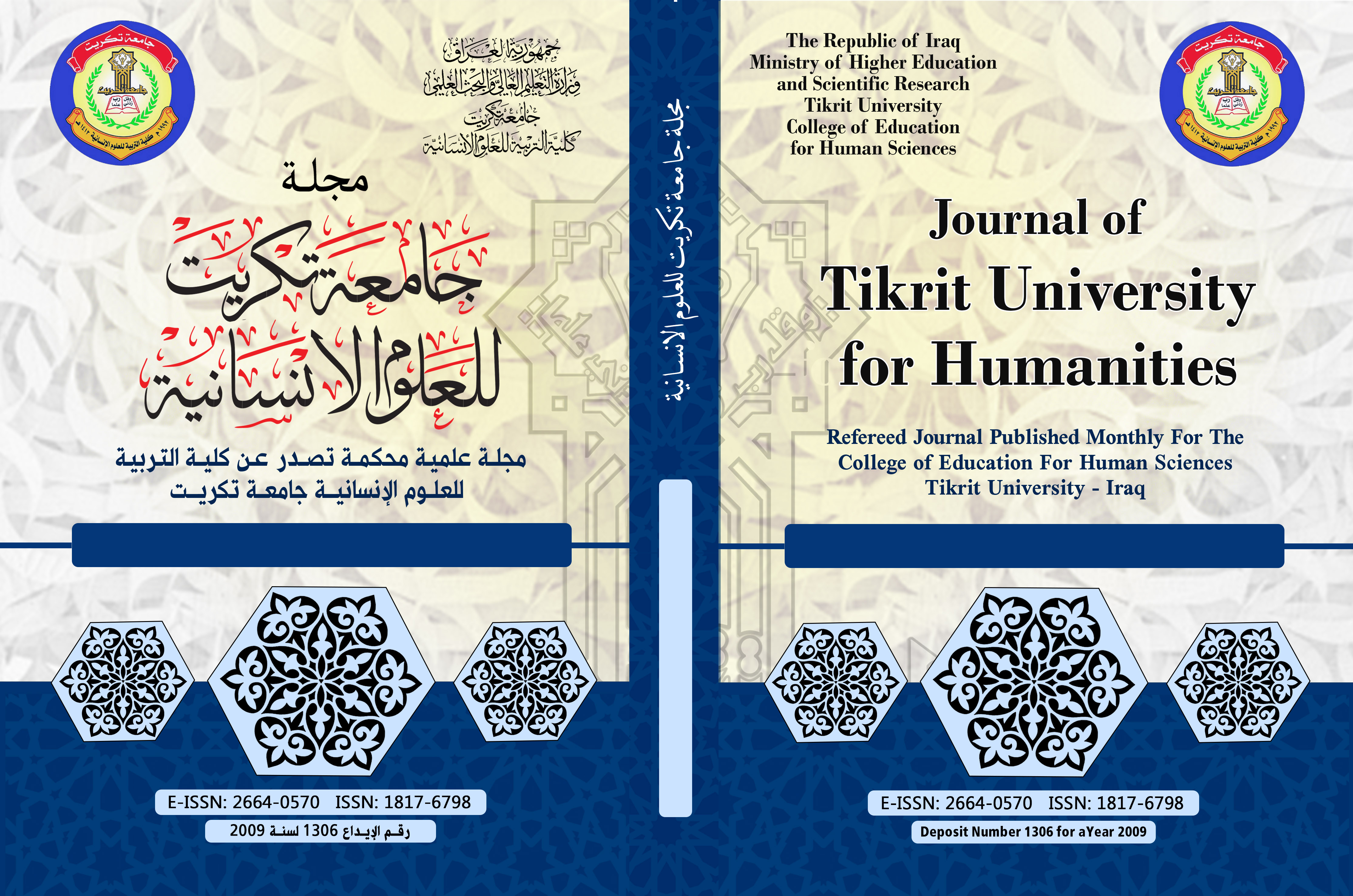Abstract
The study deals with the impact of the erosion process on agricultural lands in Al-Zab district, as it is one of the areas affected by this geomorphic activity according to the variation in surface appearances and the impact of the climate there, especially the element of rain, which had the most prominent impact on this phenomenon and the extent of its impact on agricultural lands, especially in rainy years, which constituted an obstacle to farmers after the deterioration of land due to erosion.
The present study revealed that the soils in the study area were classified into three types: brown soils of deep thickness, brown soils of medium thickness, and red soils of medium thickness.
The results of the classification of soil erosion in the study area according to
the Bergsma classification also showed that there are seven levels of erosion types according to their severity, starting from the first degree to the seventh degree, as the range of light erosion is represented by degrees (first, second, and third) and at a rate of (37%) of the area of the study area, while the moderate erosion range includes grades (fourth and fifth) and its rate reached (35%) of the area, the extent of severe erosion is represented by degrees (sixth and seventh) and its percentage reached (28%) of the total area.
The present study revealed that the soils in the study area were classified into three types: brown soils of deep thickness, brown soils of medium thickness, and red soils of medium thickness.
The results of the classification of soil erosion in the study area according to
the Bergsma classification also showed that there are seven levels of erosion types according to their severity, starting from the first degree to the seventh degree, as the range of light erosion is represented by degrees (first, second, and third) and at a rate of (37%) of the area of the study area, while the moderate erosion range includes grades (fourth and fifth) and its rate reached (35%) of the area, the extent of severe erosion is represented by degrees (sixth and seventh) and its percentage reached (28%) of the total area.
Abstract
تهدف الدراسة إلى بيان أثر عملية التعرية في تدهور وانجراف الاراضي الزراعية في ناحية الزاب، والكشف عن مدى هذا التأثير، والوقوف على طبيعة المتغيرات الطبيعية والبشرية هذا التأثير إذ تُعدُّ من المناطق المتأثرة بهذا النشاط الجيورمورفولجي تبعاً لتباين مظاهر السطح وأثر المناخ فيها لاسيما عنصر الأمطار الذي كان له الأثر الأبرز في هذه الظاهرة ومدى انعكاسة على الأراضي الزراعية خصوصاً في السنوات المطيرة ، إذ شكلت عائقاً أمام الفلاحين بعد تدهور العديد من أراضيهم جراء التعرية.
تبين من دراسة البحث أنَّ الترب في منطقة الدراسة صنفت إلى ثلاثة أصناف ،وهي ترب بنية ذات سمك عميق، وترب بنية ذات سمك متوسط، وترب حمراء ذات سمك متوسط، كذلك أظهرت نتائج التصنيف لتعرية التربة في منطقة الدراسة بحسب تصنيف بيرجسما وجود سبعة مستويات من أصناف التعرية وفق خطورتها تبدأ من الدرجة الأولى إلى الدرجة السابعة ، إذ تمثل نطاق التعرية الخفيفة بالدرجات ( الأولى والثانية، والثالثة ) وبنسبة (37%) من مساحة منطقة الدراسة، بينما نطاق التعرية المتوسطة تشمل الدرجات ( الرابعة ، والخامسة وبلغت نسبتها (35%) من مساحة المنطقة، أمَّا نطاق التعرية الشديدة فتتمثل بالدرجات ( السادسة ، والسابعة ) بلغت نسبتها (28%) من المساحة الكلية
تبين من دراسة البحث أنَّ الترب في منطقة الدراسة صنفت إلى ثلاثة أصناف ،وهي ترب بنية ذات سمك عميق، وترب بنية ذات سمك متوسط، وترب حمراء ذات سمك متوسط، كذلك أظهرت نتائج التصنيف لتعرية التربة في منطقة الدراسة بحسب تصنيف بيرجسما وجود سبعة مستويات من أصناف التعرية وفق خطورتها تبدأ من الدرجة الأولى إلى الدرجة السابعة ، إذ تمثل نطاق التعرية الخفيفة بالدرجات ( الأولى والثانية، والثالثة ) وبنسبة (37%) من مساحة منطقة الدراسة، بينما نطاق التعرية المتوسطة تشمل الدرجات ( الرابعة ، والخامسة وبلغت نسبتها (35%) من مساحة المنطقة، أمَّا نطاق التعرية الشديدة فتتمثل بالدرجات ( السادسة ، والسابعة ) بلغت نسبتها (28%) من المساحة الكلية
